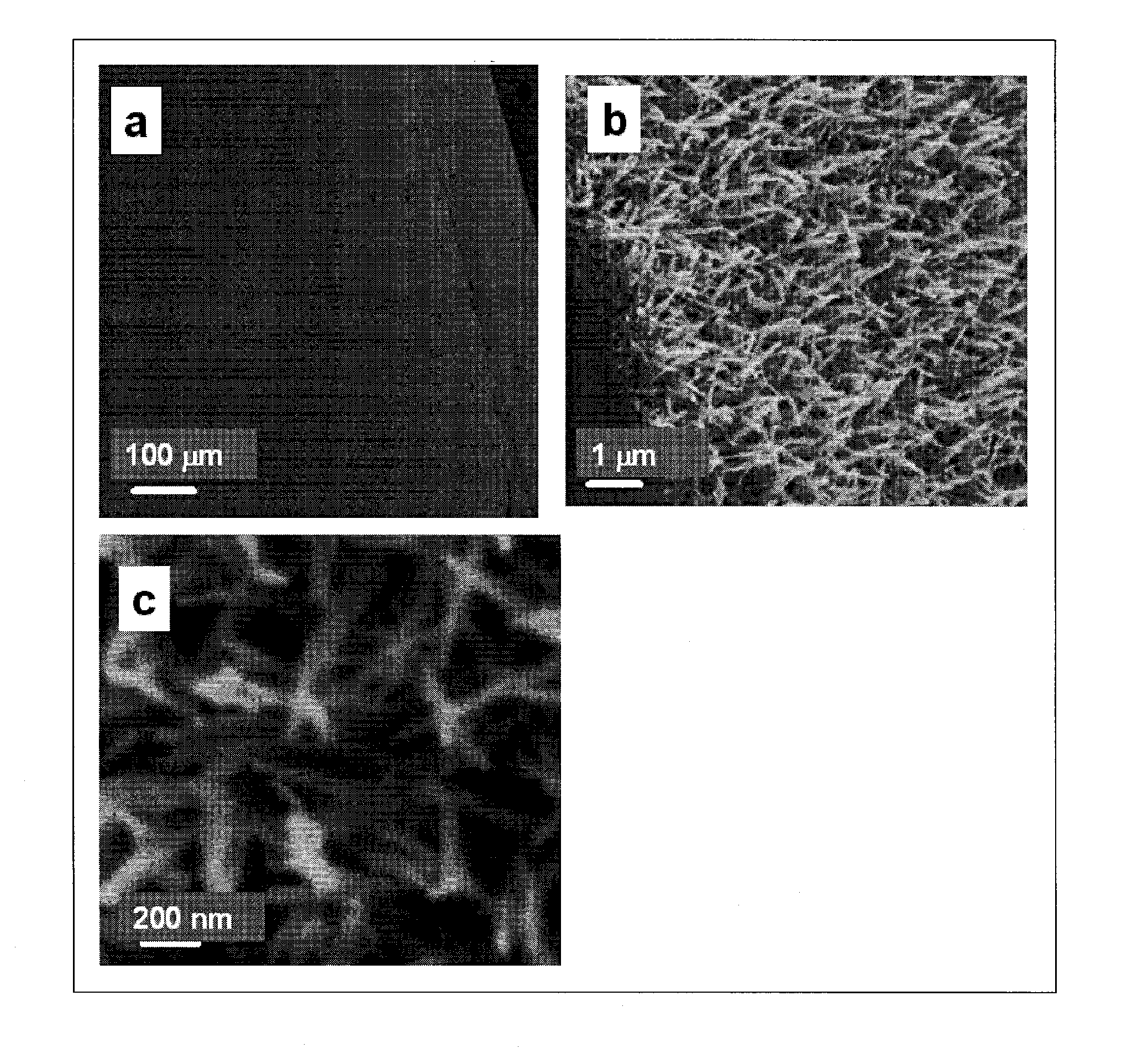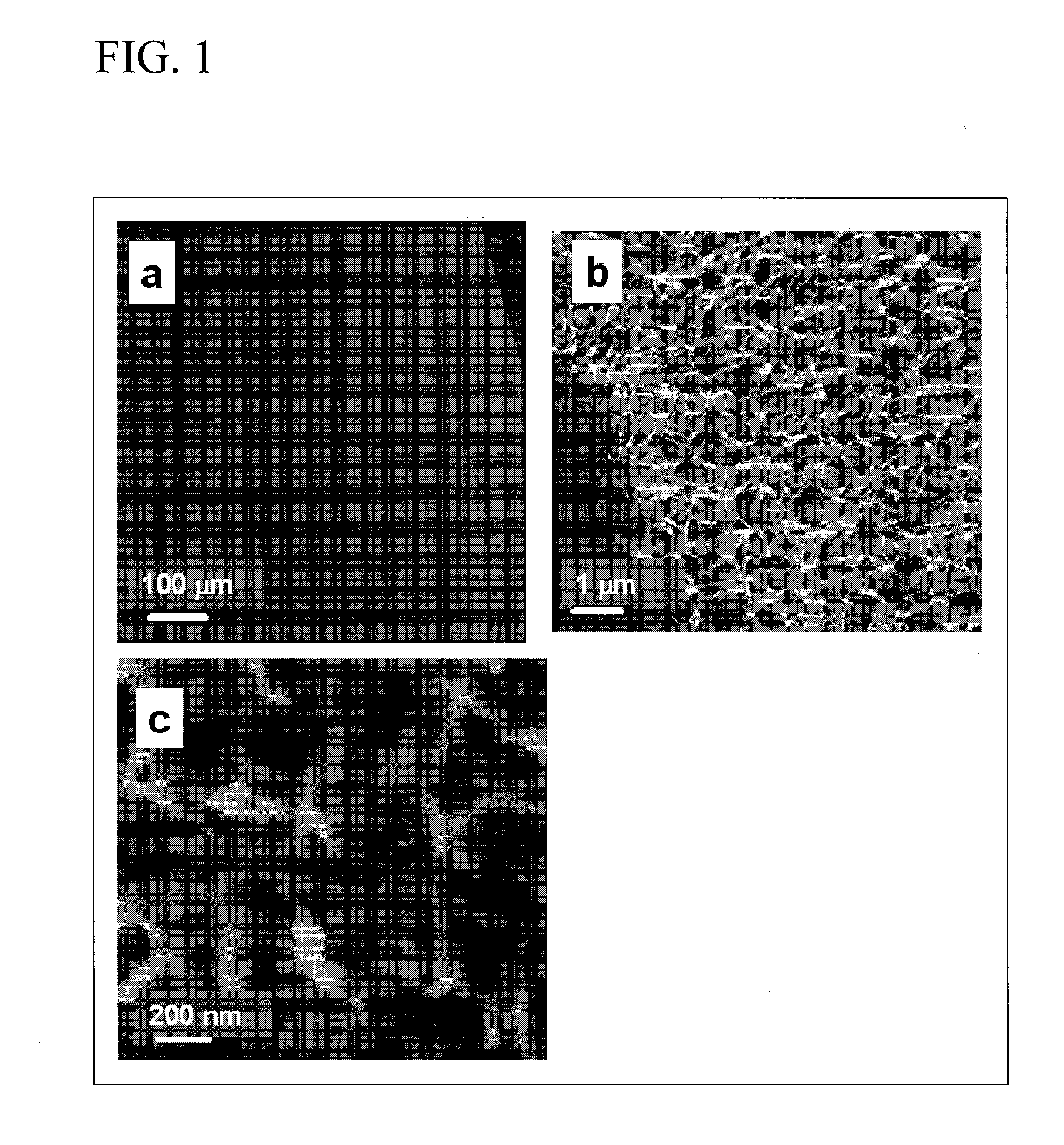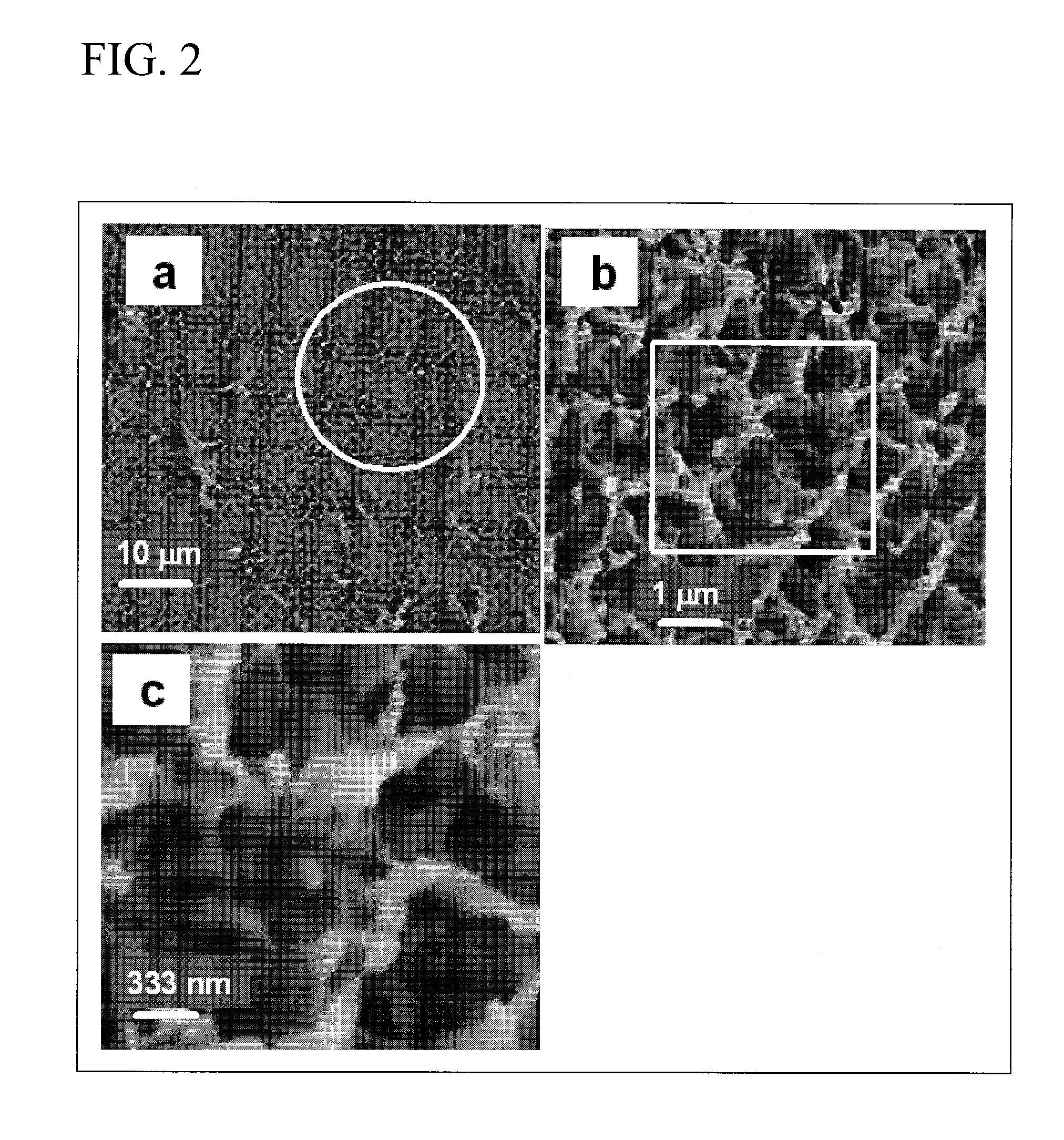Process for producing nanostructure composite-covered structure, nanostructure composite-covered structure, and reactor using nanostructure composite-covered structure
- Summary
- Abstract
- Description
- Claims
- Application Information
AI Technical Summary
Benefits of technology
Problems solved by technology
Method used
Image
Examples
synthesis example 1
Synthesis of Linear Polyethyleneimine (L-PEI)
[0196]3 g of commercial polyethyloxazoline (number average molecular weight: 50,000, average degree of polymerization: 5,000, marketed by ALDRICH) was dissolved in 15 mL of 5 mol / L-hydrochloric acid. The solution was heated to 90° C. in an oil bath, and it was stirred for 10 hours. 50 mL of acetone was added to the reaction mixture to deposit completely a polymer. After filtration, the polymer was washed with methanol three times, and white polyethyleneimine powder was obtained. The obtained powder was identified by 1H-NMR (heavy water, marketed by JEOL Co., Ltd.: AL300, 300 MHz). It was confirmed that the peak at 1.2 ppm (CH3) and 2.3 ppm (CH2), which are derived from the ethyl group at the side chain of polyethyloxazoline, was completely disappeared. That is, the results show that polyethyloxazoline was completely hydrolyzed and changed to polyethyleneimine.
[0197]The obtained powder was dissolved in 5 mL of distilled water. While stirri...
synthesis example 2
Synthesis of Star-Shaped Polyethyleneimine (B-Pei) Having a Benzene Ring at the Center
[0198]In accordance with Jin, J. Mater. Chem., 13, 672-675 (2003), star-shaped polymethyloxazoline, in which six arms of polymethyloxazoline bond a benzene ring, was synthesized as a precursor as follows.
[0199]0.021 g (0.033 mmol) of hexakis(bromomethyl)benzene as a polymerization initiator was put into a test tube having a grounded opening provided with a magnetic stirrer. After setting a three-way cock to the test tube, the inside of the test tube was vacuumed, and then purged with nitrogen. After that, 2.0 ml (24 mmol) of 2-methyl-2-oxazoline and 4.0 ml of N,N-dimethylacetamide were added in series using a syringe from the introduction opening of the three-way cock under a nitrogen gas stream. When the test tube was heated to 60° C. in the oil bath, and maintained for 30 minutes on the oil bath, the mixed solution became transparent. The transparent mixed solution was further heated to 100° C., ...
synthesis example 3
Synthesis of Star-Shaped Polyethyleneimine (P-PEI) Having Porphyrine at the Center
[0202]In accordance with Jin et al., J. Porphyrin & Phthalocyanine, 3, 60-64 (1999) and J Marcomol. Chem. Phys. 204, 403-409 (2003), star-shaped polymethyloxazoline having porphyrin at the center, which is a precursor polymer, was synthesized as follows.
[0203]After the inside of a 50 ml-flask having two-neck fitted with a three-way cock was replaced with nitrogen, 0.0325 g of tetra(p-iodomethylphenyl)porphyrin (TIMPP) and 8.0 ml of N,N-dimethylacetamide were added, and stirred at room temperature to dissolve TIMPP completely. After adding 3.4 ml (3.27 g) of 2-methyl-2-oxazoline, which is 1280 times the molar number of porphyrin, the temperature of the mixture was 100° C., and it was stirred for twenty-four hours. After lowering the temperature of the reaction solution to room temperature, and adding 10 ml of methanol to the reaction solution, it was vacuumed and concentrated. The residue was dissolved ...
PUM
| Property | Measurement | Unit |
|---|---|---|
| Length | aaaaa | aaaaa |
| Nanoscale particle size | aaaaa | aaaaa |
Abstract
Description
Claims
Application Information
 Login to View More
Login to View More - R&D
- Intellectual Property
- Life Sciences
- Materials
- Tech Scout
- Unparalleled Data Quality
- Higher Quality Content
- 60% Fewer Hallucinations
Browse by: Latest US Patents, China's latest patents, Technical Efficacy Thesaurus, Application Domain, Technology Topic, Popular Technical Reports.
© 2025 PatSnap. All rights reserved.Legal|Privacy policy|Modern Slavery Act Transparency Statement|Sitemap|About US| Contact US: help@patsnap.com



